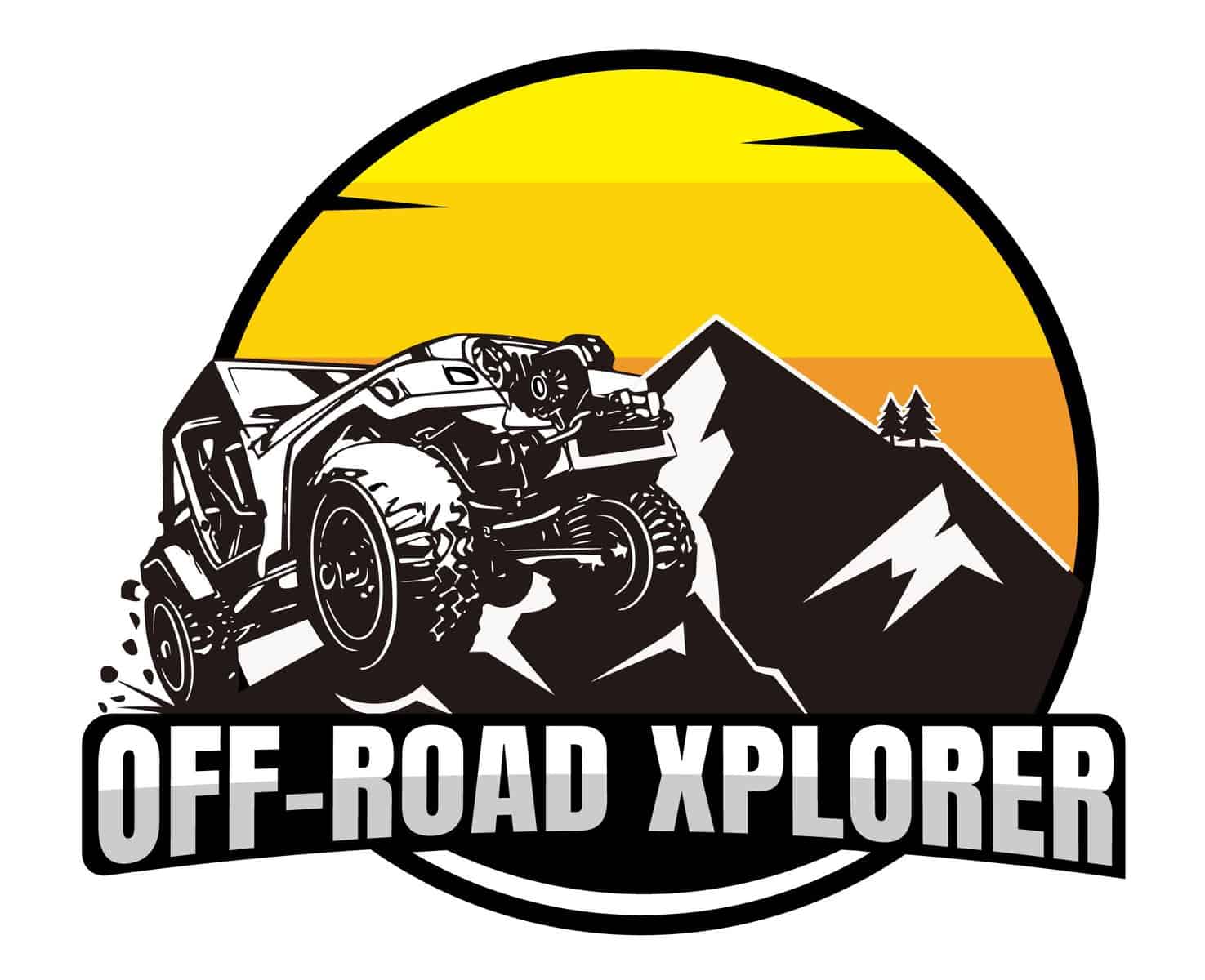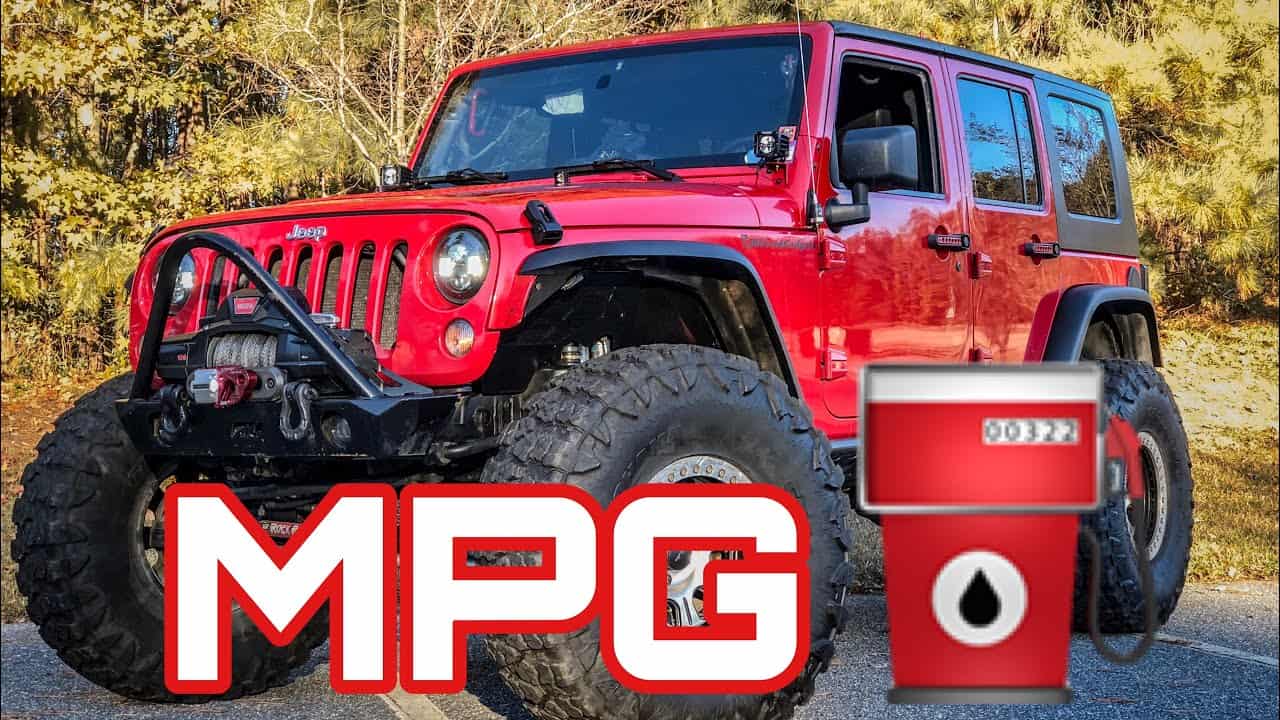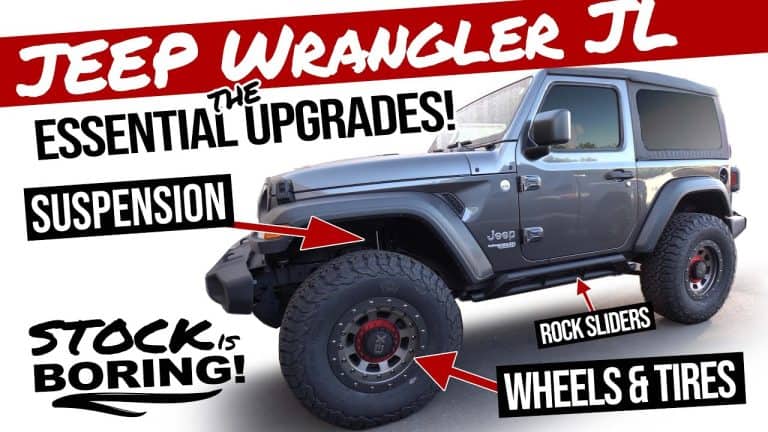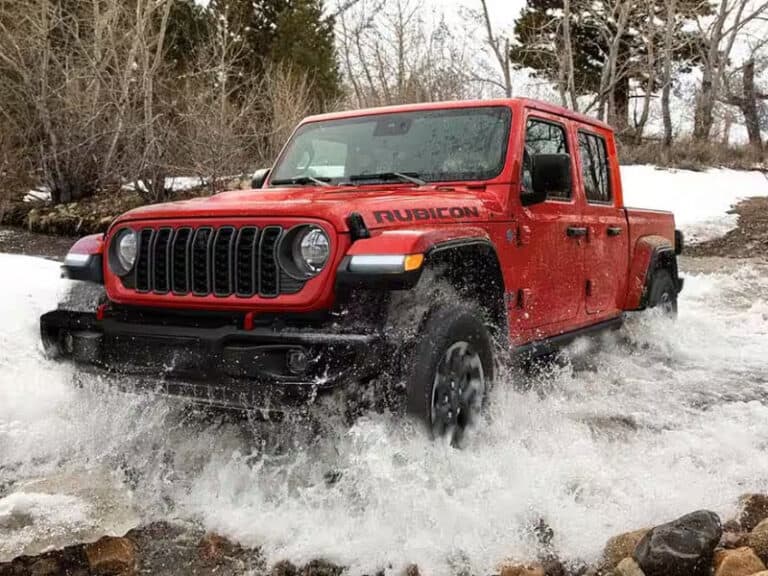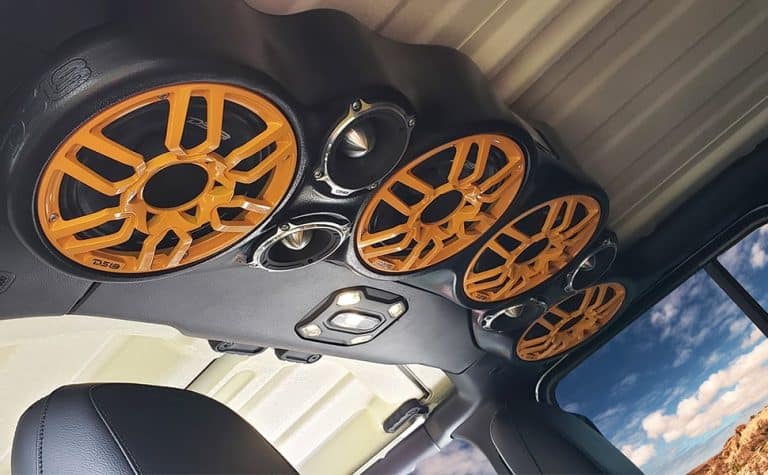Boost Your Savings: Jeep Wrangler Fuel Economy Hacks
The jeep wrangler’s fuel economy ranges from 17-25 mpg, depending on the model and engine. The jeep wrangler is a popular off-road SUV known for its rugged capabilities and distinctive style.
The Jeep Wrangler: a legendary off-roader known for conquering trails and turning heads. But let’s face it, its thirst for fuel can be legendary too. So, how does the Wrangler’s fuel economy stack up, and are there ways to wrangle (pun intended!) its gas-guzzling ways?
In this article, I will discuss a Jeep Wrangler’s Fuel Economy. 6-liter v6 engine averaging around 19 mpg in city and highway driving.
So, let’s start.
Credit: www.extremeterrain.com
Understanding Jeep Wrangler Fuel Economy
Factors That Affect Fuel Economy In Jeep Wrangler.
Fuel economy is a crucial factor when buying a jeep. Due to its unique design and off-road capabilities, fuel economy has been a long-standing issue with its owners. Many factors impact the fuel economy of Jeep Wrangler.
Below is a breakdown of what affects the fuel economy of this SUV:
Weight Watchers for your Wrangler:
Every pound counts. Excess weight from heavy accessories or roof racks drags down your MPG. Consider shedding unnecessary baggage for smoother, more fuel-efficient journeys.
Road Warriors, Unite!:
Driving conditions play a big role. Rough terrain demands more from your engine, impacting mileage. Stick to smooth highways and let cruise control be your fuel-saving hero. Remember, aggressive maneuvers like hard braking and quick starts are like tossing money out the window.
Tire Pressure
Low tire pressure is the enemy of good mileage. Properly inflated tires roll smoothly, saving you fuel. Keep those tires pumped for optimal performance and a happy wallet.
- Ensure the tire pressure is optimum.
Aerodynamic Advantage:
Jeep wranglers are not the most aerodynamic cars, and the vehicle’s overall shape often creates excess drag on the vehicle’s body, leading to fuel consumption.
- Removing the hardtop may reduce drag.
Transmission Tweak
Manual transmission Wranglers typically offer better fuel economy than their automatic counterparts. However, the convenience of an automatic might outweigh the slight drop in mileage, especially on rough terrain. Choose wisely!
- Manual transmission Jeep wranglers tend to get better mileage.
- Automatic transmission is more comfortable to drive on rough terrains.
Maintenance Matters:
A well-maintained Wrangler is a fuel-efficient Wrangler. Regular checkups, oil changes, and air filter replacements ensure your engine runs smoothly and efficiently, keeping your wallet happy too.
Fuel Type
Using the right fuel grade for your Wrangler’s engine is crucial. Consult the owner’s manual for the recommended fuel type, as the wrong choice can significantly impact your mileage.
Weather Conditions
Cold weather makes your engine work harder, guzzling more fuel. Warm weather, on the other hand, is your friend when it comes to the fuel economy of Jeep Wrangler So, enjoy those summer adventures with the top down and a lighter wallet.
Modifications
Oversized tires and gear ratio changes might make your Wrangler look badass, but they come at a cost – decreased fuel economy. Stick to factory settings or fuel-efficient modifications to keep your MPGs happy.
Driving Style
Develop a relaxed driving style. Avoid aggressive acceleration and braking, and anticipate stops to coast smoothly. Remember, slow and steady wins the fuel-efficiency race.
Beyond the Numbers:
While fuel economy is important, it’s not the only factor to consider. The Wrangler’s off-road prowess, iconic design, and open-air freedom are part of its soul. Choose the trim level and features that match your budget and adventure style.
Jeep Wrangler Fuel Economy Improvement Hacks
This version of Jeep’s SUV is a powerful off-road vehicle known for exceptional performance on rough terrains. However, this vehicle’s high fuel consumption rate can concern many drivers. In this blog post, we’ll discuss some of the best wrangler fuel economy improvement hacks to get the most out of your tank.
Installing A Cold Air Intake
A cold air intake is a simple modification that can help improve your jeep wrangler’s fuel economy. Here are some key benefits of installing a cold air intake:
- Increases airflow to the engine, resulting in improved fuel combustion.
- Reduces the temperature of the air entering the engine, making it less dense, contributing to better fuel efficiency.
- Provides a more direct airflow path than the stock intake, reducing engine strain.
Using High-Performance Air Filters
Upgrading to a high-performance air filter is a cost-effective way to improve fuel economy. Here are some of the benefits of using a quality air filter:
- Improves engine performance by allowing more air to reach the engine.
- Reduces engine strain by filtering out particles that can cause wear and tear on engine components.
- Increases fuel efficiency by optimizing the air-to-fuel ratio.
Using Low-Rolling Resistance Tires
Low-rolling resistance tires can play a significant role in improving your jeep wrangler’s fuel economy. Here’s how:
- Reduces the energy required to move the vehicle, improving fuel efficiency.
- Increases traction and stability, providing a safer driving experience.
- Enhances handling and responsiveness, improving the overall driving experience.
Upgrading To A Performance Exhaust System
Upgrading to a performance exhaust system can help in fuel economy improvement in the following ways:
- Reduces the amount of backpressure in the exhaust system, which increases airflow and improves engine performance.
- Increases the efficiency of the engine’s exhaust system, which improves fuel efficiency.
- Provides a more aggressive exhaust note, enhancing the overall driving experience.
Vehicle Weight Reduction Tips
Reducing the weight of your jeep wrangler can lead to a significant improvement in fuel economy. Here are some weight reduction tips:
- Remove unnecessary items from the vehicle, such as roof racks, spare tires, and heavy accessories.
- Replace heavy parts with lightweight alternatives where possible.
- Use lighter fuel-efficient tires.
Driving Tips For Improved Fuel Economy
Your Wrangler craves adventure, but that doesn’t mean it has to guzzle gas like a dragon chasing treasure. Here are some easy tips to squeeze more miles out of every pump visit:
Cruise like a king: Ditch the jackrabbit starts and embrace a steady pace. Your engine and wallet will thank you. Smooth acceleration and braking are your fuel-saving friends.
Highway hero: Let cruise control work its magic on long stretches. Maintaining a consistent speed keeps your Wrangler purring efficiently, not roaring for more fuel.
Idle less, explore more: Avoid unnecessary idling, like during long warm-ups. It might feel cozy, but your engine loves burning gas, not standing still.
Bonus tip: Lighter is better! Ditch unnecessary cargo and roof racks when not in use. Every pound counts when you’re trying to tame the thirst of your off-road beast.
By following these simple hacks, you can turn your Wrangler into a fuel-friendlier explorer. Remember, a little eco-consciousness goes a long way, leaving you with more money for epic adventures and happy miles!
Best Jeep Wrangler Models For Fuel Economy
The Jeep Wrangler’s legend rests on its off-road prowess, but did you know newer models have made strides in fuel economy too? While Wrangler’s thirst for gasoline may be notorious, recent redesigns offer significant improvements compared to their ancestors.
Let’s explore the Wrangler models that top the charts for fuel efficiency, helping you find an eco-conscious Jeep without sacrificing the spirit of adventure.
A Review Of The Jeep Wrangler Models With The Best Fuel Economy
Here are the jeep wrangler models with the best fuel economy:
Jeep Wrangler Sport 4X4
The jeep wrangler sport 4×4 is the most basic and affordable model. It comes with a 3. 6-liter v6 engine, which provides 285 horsepower and delivers up to 17 mpg in the city and 25 mpg on the highway.
Other notable features of the sport model include:
- Command-Trac part-time 4wd system
- 6-speed manual transmission
- Hill-start assist
Jeep Wrangler Sport S 4X4
The Sport s 4×4 is the second basic model of the jeep wrangler, and it is an upgrade from the Sport model. It has a more extensive selection of features than the sport model. The jeep wrangler sport s 4×4 has the same engine as the Sport model, which provides up to 17 mpg in the city and 25 mpg on the highway.
Other notable features of the sports model include:
- 17-inch aluminum wheels
- Power windows and locks
- Air conditioning
Jeep Wrangler Sahara 4X4
The jeep wrangler sahara 4×4 is a high-end wrangler model, providing more features and luxury than the sports models. The Sahara 4×4 comes with a 2. 0-liter turbo engine, which provides 270 horsepower and delivers up to 22 mpg in the city and 24 mpg on the highway.
Other notable features of the Sahara model include:
- Select-trac full-time 4wd system
- Leather-trimmed seats
- Uconnect 4 with a 7-inch touchscreen
Jeep Wrangler Rubicon 4X4
The Jeep Wrangler Rubicon 4×4 reigns supreme in the Wrangler lineup, boasting unmatched off-road prowess and customization options. Its 3.6-liter V6 engine conquers tough terrain but might make your wallet a little lighter at the pump, delivering 17 mpg in the city and 25 mpg on the highway.
However, the Rubicon’s appeal goes beyond fuel efficiency. Buckle up for these trail-taming features:
Rock-Trac Full-Time 4WD: Engage confident traction on any surface, from slick rocks to sandy slopes.
Tru-Lok Electronic Locking Differentials: Conquer uneven terrain with optimal grip and power distribution to each wheel.
Fox Aluminum-Bodied 2-inch Diameter Shocks: Soaked up by ruts and rollovers? These shocks handle it all with superior damping and control.
But the Wrangler story doesn’t stop with the Rubicon. Fuel efficiency has become a major focus in recent years, with newer models offering greener options. Choosing the right Wrangler can save you money at the pump without sacrificing adventure.
Remember, the Wrangler’s appeal lies in its rugged spirit and open-air freedom. If conquering the outback is your goal, the Rubicon’s fuel economy might be a small price to pay for off-road dominance. But if fuel efficiency is a top priority, explore other Wrangler models with greener engines and driving modes.
Ultimately, the perfect Wrangler is the one that matches your budget, driving style, and thirst for adventure. Choose wisely, and let the trails tremble!
Frequently Asked Questions
Q: How many miles per gallon does a Jeep Wrangler get?
A: The average Jeep Wrangler gets around 17 mpg combined. However, this can vary depending on several factors, including engine type, transmission, driving conditions, and weight. For example, the 2.0L turbocharged engine offers slightly better mileage than the 3.6L V6, and manual transmission Wranglers tend to be more fuel-efficient than automatics.
Q: Is the Jeep Wrangler fuel-efficient?
A: Compared to other SUVs and cars, no, the Jeep Wrangler isn’t the most fuel-efficient option. But, considering its impressive off-road capabilities and iconic design, it’s not the worst either. There are ways to optimize your Wrangler’s fuel economy, making it a more budget-friendly adventure companion.
Q: How often do I need to fill up a Jeep Wrangler?
A: This depends heavily on your driving habits and the Wrangler’s fuel tank size. If you mainly drive on highways and practice eco-conscious driving, you might fill up less frequently. However, frequent off-roading or aggressive driving will drain the tank faster. The standard Wrangler has a 19.5-gallon tank, so expect a range of around 330 miles on average fuel consumption.
Q: Can I improve the fuel economy of a Jeep Wrangler?
A: Absolutely! There are several things you can do to squeeze out some extra miles per gallon from your Wrangler. These include:
- Maintaining proper tire pressure: Underinflated tires increase drag, reducing fuel efficiency.
- Driving smoothly: Avoid hard braking and quick starts, as these guzzle gas.
- Removing unnecessary weight: Ditch heavy roof racks and accessories when not in use.
- Optimizing your driving route: Choose highways over rough terrain whenever possible.
- Considering fuel-efficient modifications: Certain upgrades like lightweight wheels or aerodynamic enhancements can improve MPG.
Q: Are there alternative fuel options for the Jeep Wrangler?
A: While there are no official hybrid or electric versions of the Jeep Wrangler yet, there are aftermarket conversion kits available to modify your Wrangler to run on propane or other alternative fuels. However, these modifications can be costly and complex, so thorough research is recommended before making the switch.
The Verdict
The Jeep Wrangler’s fuel economy might not win any awards, but it’s come a long way from its gas-guzzling past. With careful driving habits and the right engine choice, you can still enjoy the Wrangler’s legendary capabilities without breaking the bank at the pump. And hey, with the 4xe model offering a taste of electric power, the future of fuel-efficient Wrangling is looking bright.
Remember, fuel economy is just one factor to consider when buying a car. The Wrangler’s off-road prowess, iconic design, and open-air driving experience might just be worth the extra trips to the gas station for some!
